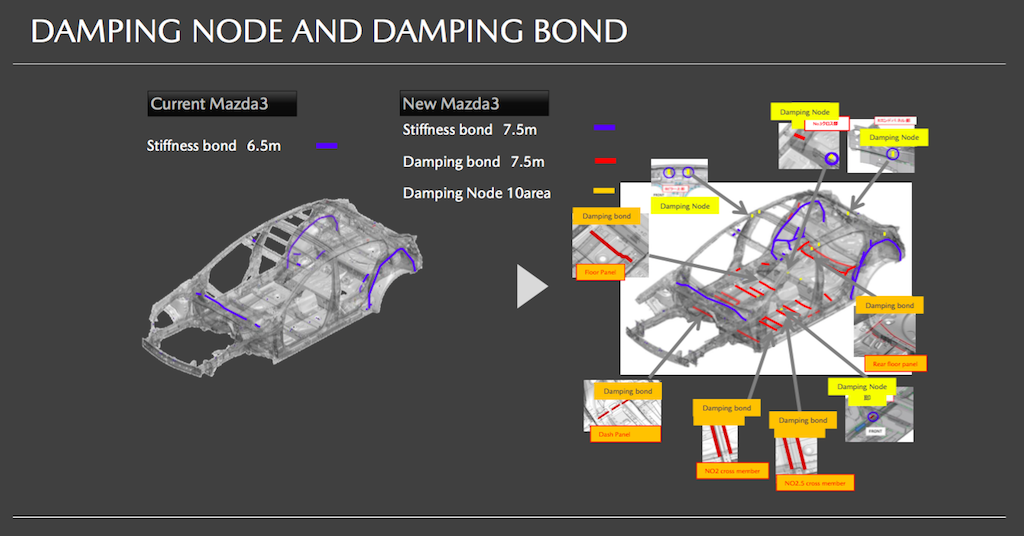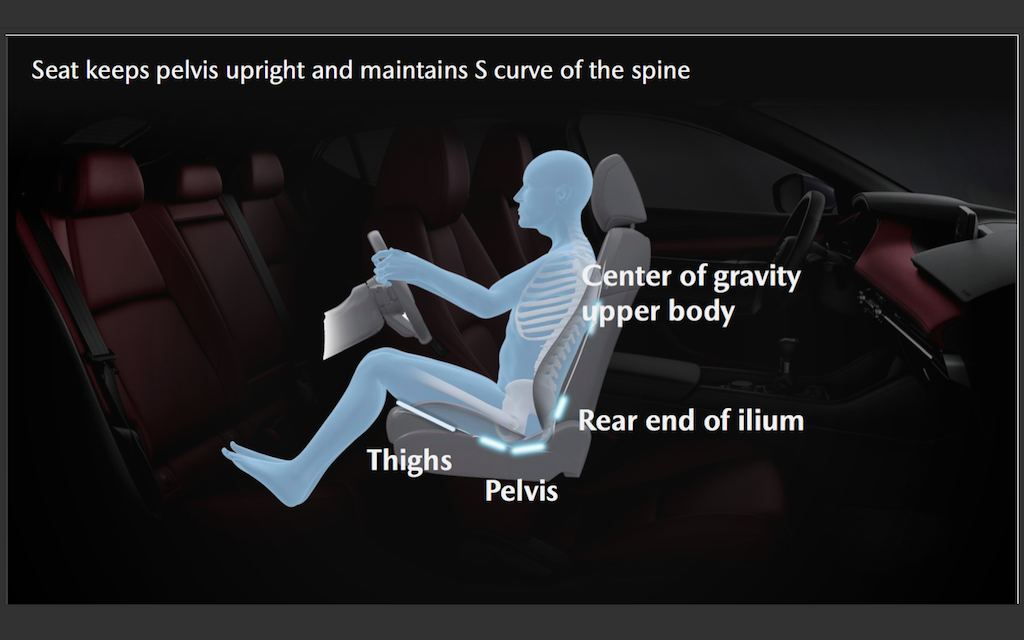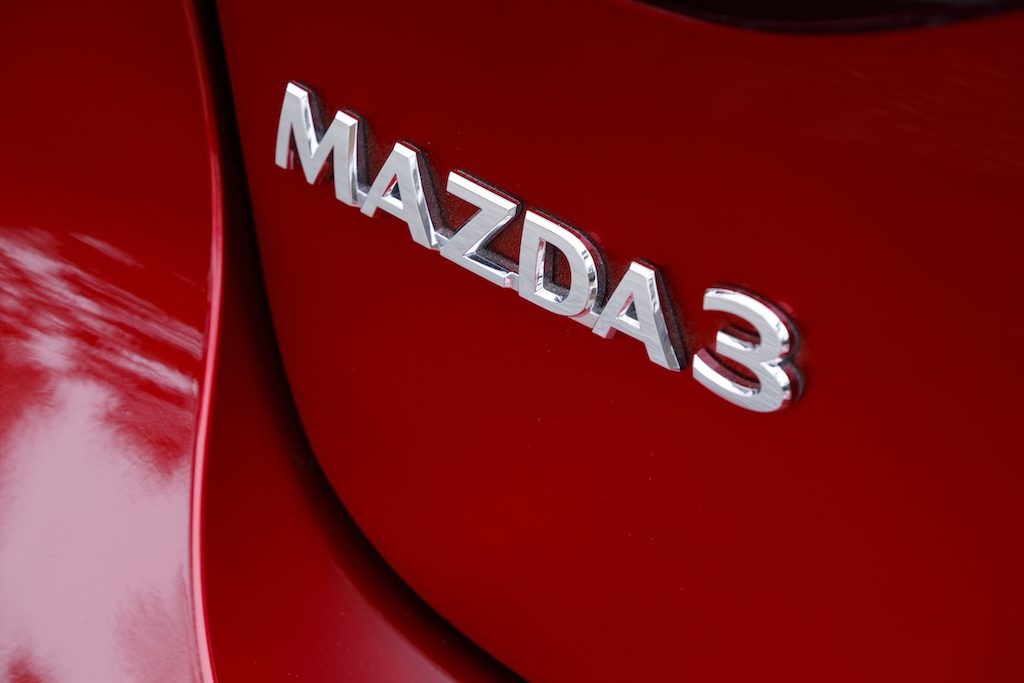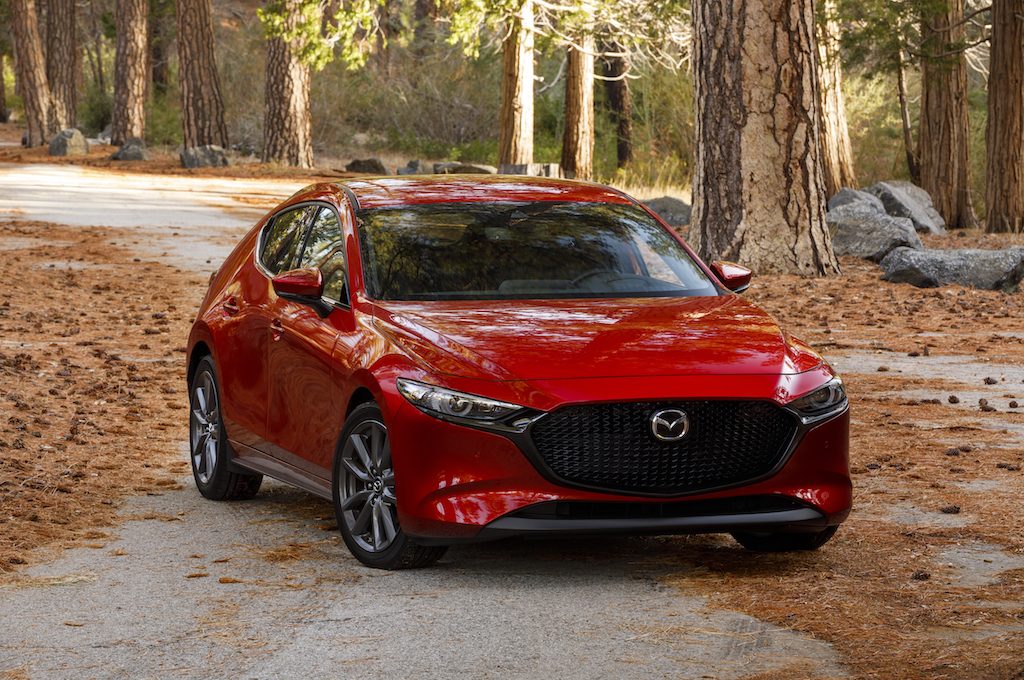New 2019 Mazda 3 in Singapore: All you need to know (Updated w/ video)

Derryn Wong
15/06/2019
The new Mazda 3 is coming to Singapore ‘soon’. Here’s all you need to know about its huge slew of totally new features and how it could even be an ‘affordable luxury car’
Photos: Mazda
- – UPDATED July 2 2019 : Singapore pricing and final spec details. View official Singapore spec sheet here.
– Sedan has Classic, Elegance, and Astina trim levels
– Hatchback has Elegance and Astina
– Drivetrain, Equipment and Safety sections updated to show official performance specs, differences between trim levels
– UPDATED June 16 2019: Added Specification/Equipment details
– We’ve driven it! First drive review link here
– New seventh-gen Mazda 3 will come to Singapore in hatchback and sedan forms, mild hybrid 1.5-litre version confirmed, launching ‘soon’, price TBC
– CarBuyer says: Expect a launch within the next quarter, pricing similar to previous model
– 1.5-litre engine is carried over from before, but everything else from design to interior and platform is totally new
– Mazda aims high, blending luxury car features in an everyday package
– Stay tuned to CarBuyer.com.sg for a first drive review this weekend
SINGAPORE – The new, seventh-generation of one of Mazda’s most perennially popular models, the Mazda 3, is coming to Singapore ‘soon’, according to local distributor Eurokars Mazda. Here is everything we know about it so far.

Previewed at the Singapore Motor Show in January this year, the seventh-gen Mazda 3 is an important car for the brand, not just because it’s the single most popular model in the Japanese carmaker’s lineup.
The model is the harbinger of a sort of soft reboot for Mazda, similar to how the CX-5 sport utility vehicle (SUV) in 2012 was the first car to embody the brand’s then-new Skyactiv technology approach.
The new Mazda 3 premiers a new platform, revamped design language, new cabin concept and human machine interface (HMI) with more connectivity, improved safety and new drivetrain technology.
One of the key design philosophies is that the Mazda 3 was aimed at making humans do better inside it.

“(With the Mazda 3) we want to enhance the ability of a human, rather than the machine-oriented performance, and to design a car that feels like an extension of your body,” said Mr Susumu Niinai, the general manager of Mazda’s Asean Business Office (pictured above).
[embedyt] https://www.youtube.com/watch?v=n8spV3SYSuc[/embedyt]WATCH MORE: Filmed at Mazda’s own Mine Proving Ground in Japan: We walk through the 2019 Mazda 3, showing the differences between the sedan and hatch, as well as highlighting some cool new features of the hatchback, then look at the cabin quality with infotainment, instruments, safety and more.
Design & Bodystyle

Mazda’s maverick Kodo Design approach has further evolved, and as a result the Mazda 3 is probably one of the only mainstream sedans to have curves that wouldn’t look out of place on a sports car.
That’s been achieved by a design approach that has channeled Japanese minimalism (‘beauty through subtraction’), deleting lines and creases that are common on modern cars and instead emphasising form through reflection and light off the car’s body.

As before, the car comes in a sedan or hatchback body style. Unlike before where the two cars were aesthetically identical, number of doors aside, the hatchback has a distinctly more sporting bent compared to the sedan. The ‘sedan is more sleek and elegant, while the hatchback is more condensed and emotional,’ says chief designer Yasutake Tsuchida (pictured below).


The hatchback is offered with an exclusive exterior colour, Polymetal Gray, and interior upholstery colour in Burgundy. Other markets also offer a sporty front lip-spoiler and bootlid spoiler sport kit for the hatchback, although its availability is TBA in Singapore at the moment.
Drivetrain variants

Globally, there are four gasoline engines and one diesel engine on the cards, all five engines are inline four-cylinder units mated to a six-speed automatic or six-speed manual gearbox.
Additionally, the Mazda 3 also has an optional mild hybrid system (‘Mazda Hybrid System’) which can be paired with any of the gasoline engines.
The gasoline engines are a 1.5-litre, 2.0-litre, a 2.0-litre with Mazda’s compression ignition Skyactiv-X technology, and a 2.5-litre. The 2.5-litre we know from the current CX-5 and packs cylinder deactivation tech with 186hp.

For Singapore, currently the only confirmed engine variant is the 1.5-litre with mild hybrid system, which local distributor Eurokars Mazda has launched and priced as of July 3, 2019.
There will be no manual or all-wheel drive variants for Singapore, and a six-speed automatic transmission is standard for all models.
Unlike the rest of the new Mazda 3, the 1.5-litre and 2.0-litre engines have similar performance to the previous model, since they are largely carried over without major changes.

CarBuyer’s Primer on Mazda Skyactiv X:
What is Skyactiv-X and why it is a Holy Grail of engine tech?
5 rather surprising things about Skyactiv X
CarBuyer tests Skyactiv-X in prototype form
UPDATE July 3 2019: Singapore specifications for the 1.5-litre MH (mild hybrid) revealed.
The 1.5-litre engine makes 120hp at 6,000rpm, with 153Nm of torque, claimed fuel consumption is 5.5L/100km and in Singapore the car has a VES band of A2, a S$10k rebate.
The sedan has a 0-100km/h time of 11.9-seconds, and top speed of 200km/h, while the hatch does 12.1-seconds and 192km/h, respectively.
The belt-driven motor generator is a 6.8hp unit with 48.5Nm of torque and motor assist is only applied when accelerating from a standstill. A small lithium ion battery pack is located near the front firewall.
The hybrid system is solely for recuperating energy and allowing extended start-stop operation, like the Audi A6 and Mercedes-Benz C 200, it can’t run on electric power alone.

Currently under consideration for Singapore are the 2.0-litre and 2.0-litre Skyactiv models. The 2.0-litre model has 155hp with 203Nm of torque, which is almost identical to the previous-gen model, although there is also another 120hp specification version which we didn’t receive in Singapore and are unlikely to with the new iteration.
Performance specs have yet to be revealed but the old model did 0-100km/h in 9.0 seconds with a 202km/h top speed, with a fuel consumption of 6.1L/100km and CO2 emissions of 131g/km, and the new model will almost certainly better that.
The 2.0 Skyactiv-X will be offered globally with the mild hybrid system, and the engine makes 181hp and 220Nm of torque. Currently no other performance figures have been revealed.
Dimensions
| Hatchback 6th gen | New Hatchback 7th gen | Sedan 6th gen | New Sedan 7th gen | |
 |  |  |  | |
| L x W x H (mm) | 4470 x 1795 x 1470 | 4460 x 1795 x 1435 | 4585 x 1795 x 1440 | 4660 x 1795 x 1440 |
| Wheelbase (mm) | 2700 | 2725 | 2700 | 2725 |
| Boot Space | 364 litres | 295 litres | 419 litres | 444 litres |
As you can see from the chart, the car has grown modestly, with the sedan naturally being longer than the hatchback model, and for both body styles the width remains the same, the height is also effectively identical.
Front and rear track have been widened by 15mm and 20mm respectively, likely for improved handling dynamics.
The wheelbase has been increased slightly from 2,700mm to 2,725mm, so on paper it has the advantage over the Honda Civic, which was the car with the longest wheelbase in the segment.
Interior

The minimalist approach extends to the interior where the design team focused on removing panel gaps and intrusive elements, such as dashboard vents, concentrating the cabin into ‘operating zones’ with a clear focus on the driver to match the brand’s jinba ittai driver centric approach.
In our preview of the car we saw a significant improvement in the cabin’s appeal thanks to the expansive, uncluttered surfaces, and better material choices including more leather, soft plastic, and satin chrome.

Mazda has also made considerable effort to ‘unify’ the cabin in a way typically seen only by luxury carmakers. It’s claimed to have reduced the variance of its white backlighting by 30 percent, as well as optimising all of the switchgear in the cabin for a similar crisp haptic feedback.
The new Mazda Connect infotainment system has received a total upgrade. The 8.8-inch screen (compared to 7.5-inches before) ditches touchscreen capability – the sole control method is the rotary controller, a move that Mazda says reduces driver distraction.
The system is capable of smartphone connectivity through Android Auto and Apple CarPlay, and the standard sound system is an eight-speaker, eight-channel setup Mazda says is capable of impressive audio performance for an OEM system.
Specifications / Equipment
Three trim levels will be offered for the 1.5 in Singapore, from least to most expensive they are Classic, Elegance, Astina. The hatch is sold only in Elegance and Astina trim levels.
Classic, the base spec, has 16-inch wheels, LED headlamps with no DRLs, power folding mirrors, Urethane-covered steering wheel, PVC covered shift knob, manual aircon, manual dimming mirrors, leather upholstery and manual seats.
Elegance, the middle spec, has 18-inch wheels, automatic LED headlights with DRLs, power folding side mirrors with auto dimming, auto dimming rear view mirror, leather steering wheel and shift knob, a DVD player, automatic air con, powered front seats with leather upholstery. All other variants except Elegance have keyless entry/start.

The new Mazda Connect infotainment system with its 8.8-inch display screen and navigation is standard issue for all models globally – unlike the previous car there is no bare-bones version with a basic monochrome LCD display radio system. Also standard for all models is the heads-up display and 7.0-inch active driver instrument display
Mazda demonstrated its new eight-speaker, eight-channel sound system with six speakers in front and two in the back, including new front woofers that are mounted under the dashboard near the front wheels. The optional Bose sound system seen on Astina-spec models adds four extra speakers, including a rear subwoofer.
Active and Passive Safety
Safety is also boosted with the Mazda 3 having seven airbags as standard – a driver’s knee airbag, dual front, dual curtain and dual side airbags. The Mazda 3 has scored five stars in the latest Euro NCAP round of testing.
Classic spec cars lack most of the advanced safety features, but still have a reverse camera.
Elegance spec cars have adaptive front lighting, high beam control, a 360 view monitor, blind spot monitoring and rear cross traffic alert, lane keeping assist and lane departure warning, radar-based cruise control with distance and speed alert. There’s also Smart Brake Support (which boosts braking power in emergency situations and also brakes autonomously), and it also works when it detects traffic approaching while in reverse.
Astina spec cars add, on top of all this, driver monitoring (fatigue and attention monitoring), Front Cross Traffic Alert, and Cruising and Traffic Support, which adds steering assist to the adaptive cruise control.
Platform/Chassis

Mazda claims significant steps forward with a new iteration of its Skyactiv vehicle platform. The new platform jumps from three to 30 percent high-tensile steel for improved crash protection with no added weight, although the company declined to quote percentage increases in torsional rigidity.
It’s proved its words at least, with the new Mazda 3 recently taking a maximum Euro NCAP safety score of five stars, and becoming a USA IIHS top safety pick. A good start, since this platform will also underpin the majority of the brand’s cars in the near future.
Notably, the car packs seven airbags as standard, including a driver knee airbag, again another feature not normally found in mainstream cars.


There have been big steps in improving refinement and reducing noise, vibration and harshness too. Mazda uses new reinforcements called damping nodes in ten parts of the body, as well as 7.5-metres of structural adhesive (‘damping adhesive’, whereas the previous model, lacked these entirely. More than 40 points of the interior and body have additional insulation, and a reduction in the number of structural holes in the body (for construction/assembly) also reigns in NVH.

Pelvis Stress Free: How Mazda’s new-gen platform aims to help your pelvis work
One fascinating aspect of Mazda’s philosophy is a new focus on humans and their natural behaviour. That underpins the ‘less is more’ approach of visually removing clutter outside and in, but in dynamic terms it wants to make driving a car as easy as walking.
It aims to do that by reducing unnatural movements, such as swaying which contributes to carsickness, through ergonomics that support the human body (pelvis, spine, hips) and additional systems like G-Vectoring Control that minimise abrupt movements. All models of the new Mazda 3 come with the latest iteration, G-Vectoring Control Plus.























 on the go
on the go





